|
|
[Guest post by Madhu Sheth]
I read the"Full Catastrophe Living" book by Jon Kabat-Zinn (600+ pages) and found out what is the essence of wisdom of body and mind to face stress, pain, and illness. So I came to a simple conclusion – It is all about positive attitude in life. Look and observe inward to find direction and purpose in life.
Various research studies indicate some of the human characteristics that help heal and promote better health and living. So below is a summary from the book for you to read and if interested in more details, you may read the book. There is lot more in the book than the summary presented here- The practice of Mindfulness and Meditation, A new way of thinking about health and illness, Stress, Taking on the Full Catastrophe, The way of awareness.
Continue reading »
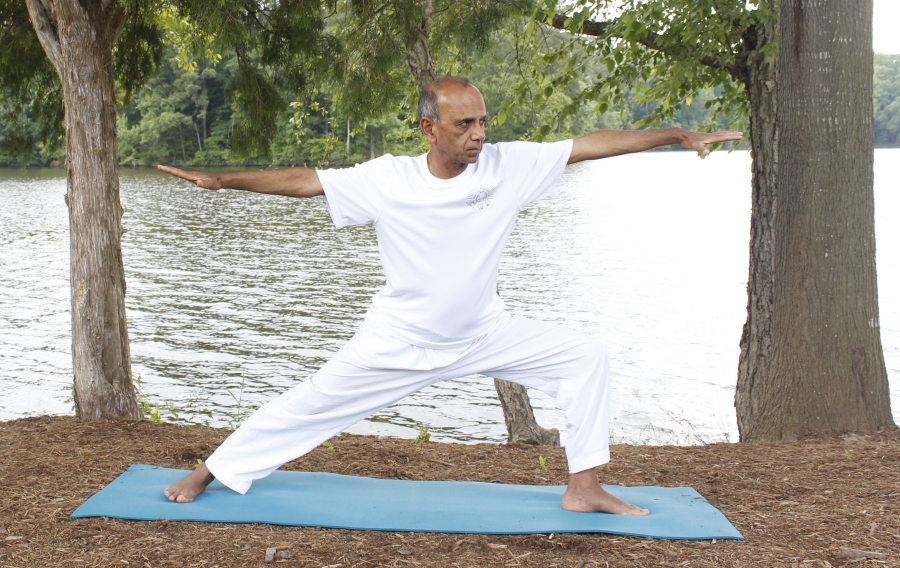 Virabhadrasana (Warrior2)
I am pleased to announce the next 21-day Yoga Immersion program. The past programs have been very well received by all the participants. For most of them, it has been truly a life-transforming experience. I invite you to join me on this exciting and deeply rewarding 21-day yoga journey. Here are the particulars:
[Please download the flier here]
- When: Monday, May 11 – Sunday, May 31, 2015
- Time: 6:00 AM – 7:30 AM
- Where: 4000 Bear Cat Way, Suite 102, Morrisville, NC 27560
- Cost: $125
Continue reading »
asana-video sequences
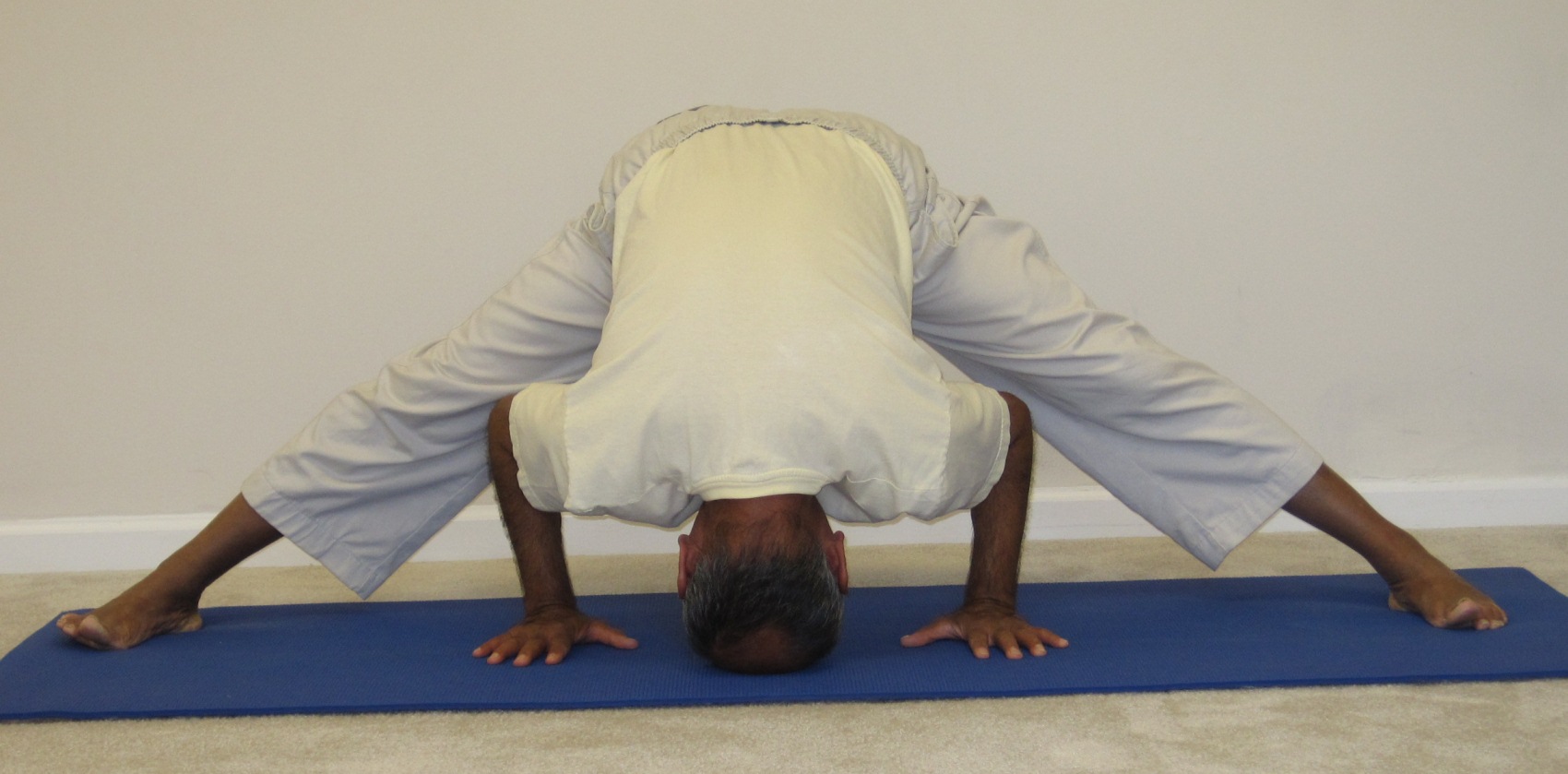 Prasarita Padottanasana
If you have visited my facebook page recently, you may have noticed that I have started adding short video sequences of some of the most commonly practiced asanas on youtube. Many of the students have asked me for video instructions on the basic asanas or sequence of asanas which can help them with their personal home practice. I have been unable to present these video sequences in the past as I could not find someone who could shoot and edit the videos. Fortunately, a few months ago, my good friend, Ami, who is an excellent videographer, very kindly agreed to help me shoot these videos. For the last few weeks we have been shooting, on the average, one short video every week and putting it up on youtube.
I highly encourage you to visit my youtube channel and subscribe to the channel. Having subscribed to the channel, I would truly appreciate your feedback on the videos that you watch. I welcome your comments and feedback and any suggestions for future video sequences. Here are some of the recent videos that you will see on youtube:
Prasarita Padottana – Wide-legged standing forward bending pose
Parshvottanasana – intense side stretch
Four simple poses for a strong core
Twisting janu shirshasana (head-to-knee) and Pashchimottanasana (seated forward bend)
Janu-shirshasana (head-to-knee pose)
Continue reading »
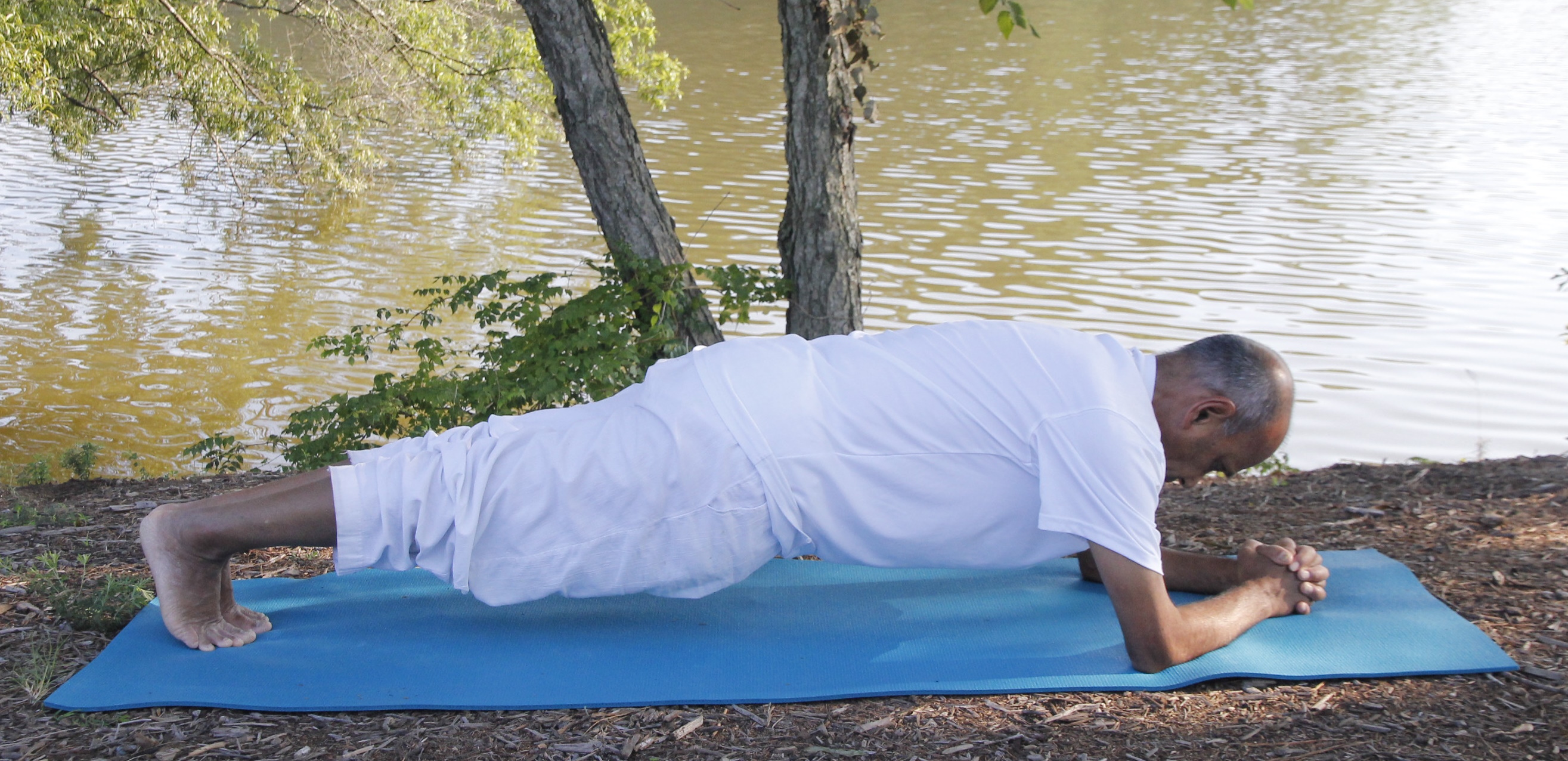 Forearm Plank
Core and back muscles, lower back in particular, are perhaps two of the most important sets of muscles in yoga practice. These muscles get used during majority of the yoga asana and pranayama practices. Strength and stability of these muscles can help you perform most of the yoga practices effectively and safely. On the other hand, a strong and regular yoga practice can help develop these muscles effectively.
For this post, I have chosen four simple poses that will help develop a strong core and stabilize the back muscles. You can view a video of these poses here.
Continue reading »
- What: An Introduction to the Yoga Sutras of Patanjali
- When: First Saturday of the month
- Next Session: Saturday, April 4, 2015
- Focus: Eight Limbs of Yoga (Ashtanga Yoga)
(see below for more details)
- TIME: 2:30 – 4:30 PM
- LOCATION: 4000 Bearcat Way, Suite 104, Morrisville, NC 27560
- FEE: by voluntary donation
Why study the Yoga Sutras of Patanjali (YSP)?
Continue reading »
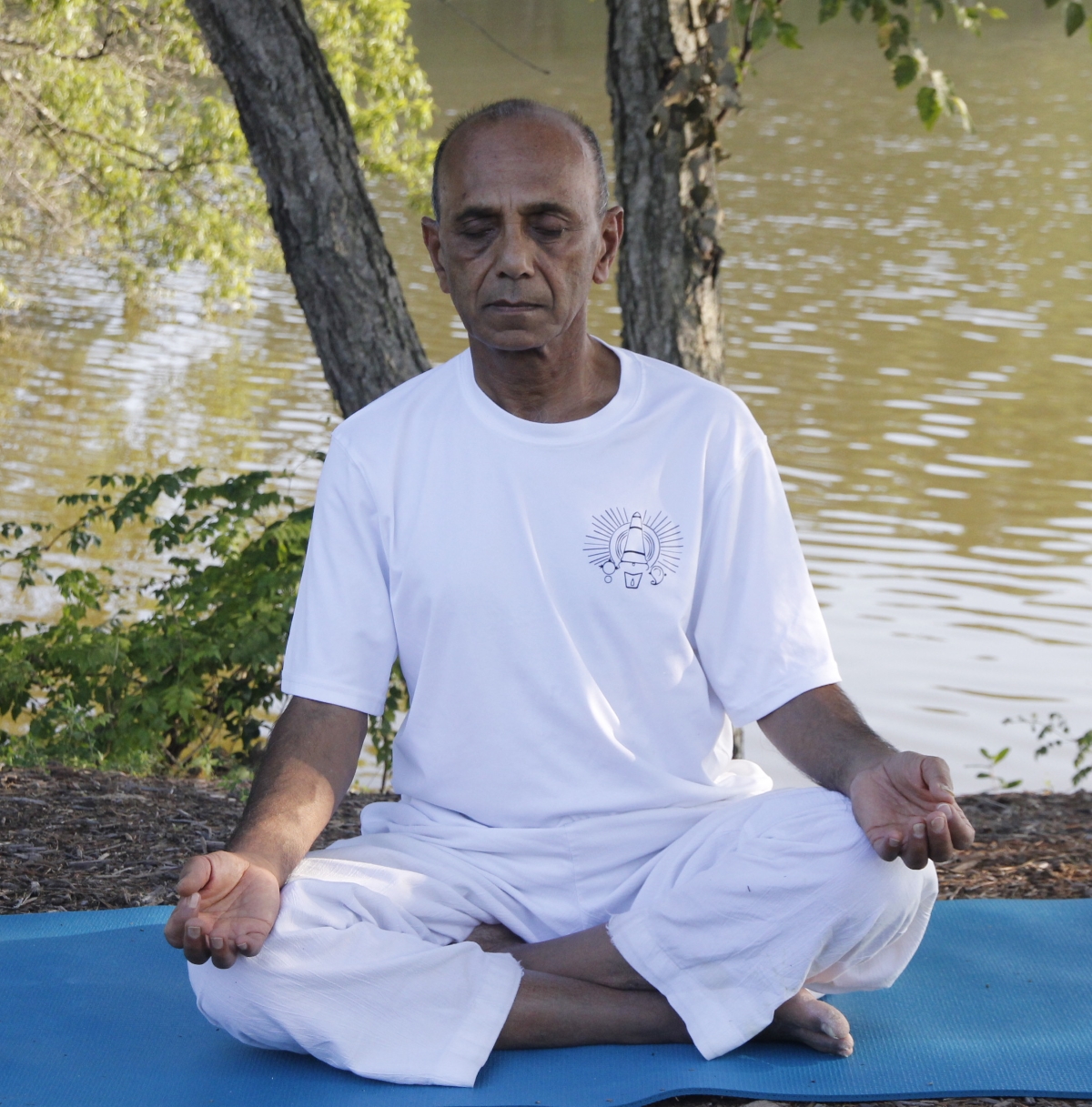 Sukhasana (Easy Pose)
Here are the three most common reasons why people don’t meditate.
-
Reason #1: "I don’t have time"
-
Reason #2: "I can’t sit at one place for 20 minutes"
-
Reason #3: "My mind is constantly racing – I can’t keep it quiet even for a minute"
Let us take a close look at these three reasons for not meditating.
Continue reading »
 Pumpkin Chocolate Chip Muffin
As per our tradition, we recently had the yoga breakfast with the participants of the recently concluded 21-day yoga intensive. It was a great time to mingle with each other in a very relaxed, casual atmosphere. An important part of the get-together always is to share some of the most delicious veggie dishes for breakfast.
Chris Morton has shared this gluten-free and vegan recipe for "pumpkin chocolate chip muffins" which was enjoyed by everyone. Here is the recipe:
Pumpkin chocolate chip muffins
-
Combine in a mixer:
-
1 15 oz. can pumpkin
-
1/2 cup coconut oil
-
1 cup sugar
-
Mix dry ingredients:
-
1 1/2 cups oat flour
-
1/2 cup coconut flour
-
2 tsp baking soda
-
1/4 tsp kosher salt
-
1/4 tsp ground cloves
-
1/4 tsp ground ginger
-
1/4 tsp ground nutmeg(or fresh grated)
-
1 tsp cinnamon
-
Add to wet. Mix well
- Stir in 1/2 to 3/4 bag of enjoy life mini chocolate chips
- Bake at 350° for 25 min.
- It yielded 21 muffins for me scooped into mini muffin pans
If you try it out, please share your experience here with preparing the dish and how you enjoyed it.
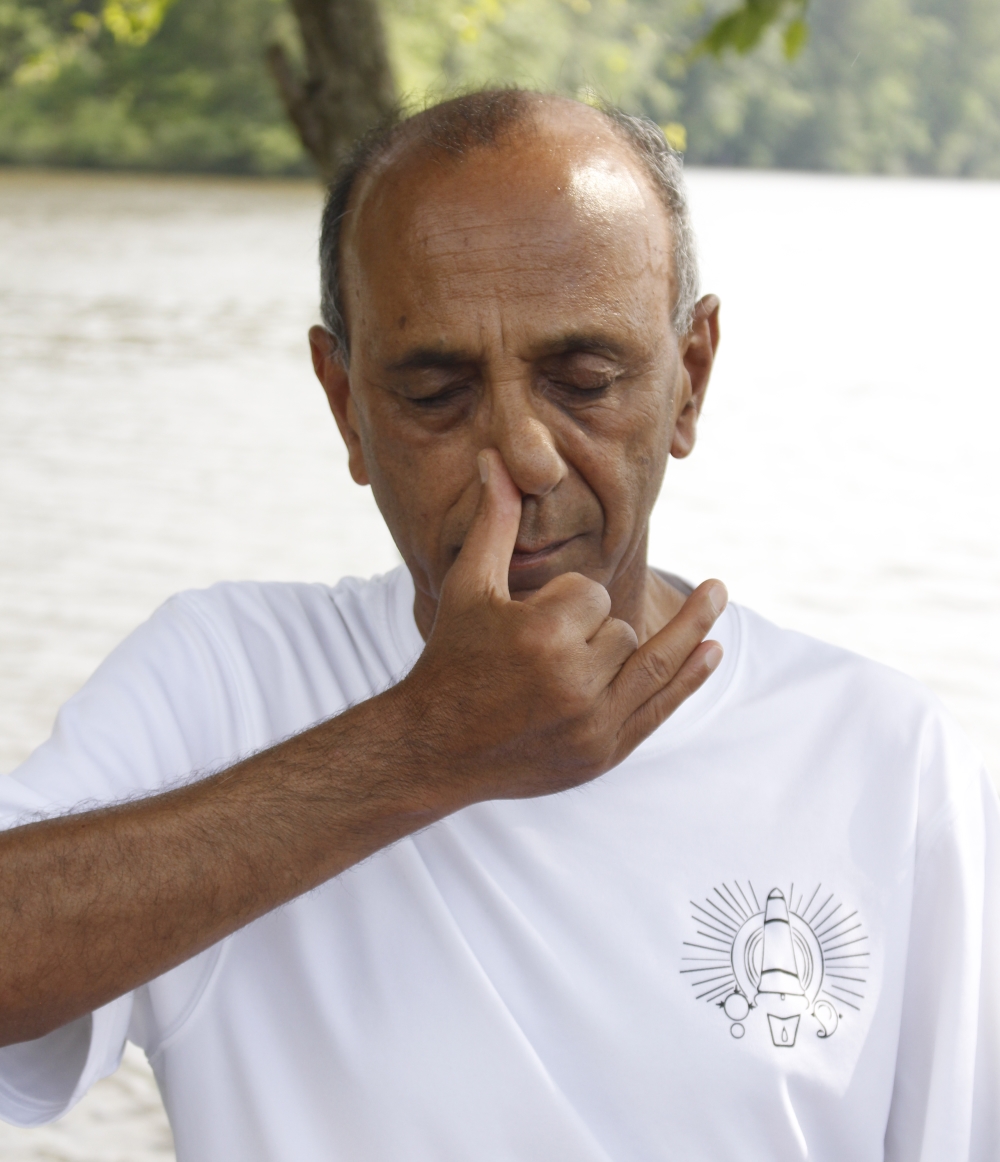 Vishnu Mudra
I am pleased to announce the next 14-day pranayama/meditation intensive.
Come and join me for this life-transforming experience where you will learn two of the most important aspects of a complete, integrated yoga practice – pranayama (breathing techniques) and meditation. In this program you will be introduced to many of the breathing techniques that are mentioned in our ancient yogic texts. You will also learn the concepts and techniques of meditation.
No prior pranayama or meditation experience is required.
- When: Monday, Monday, April 6 – Sunday, April 19, 2015
- Time: 6:00 – 7:30 AM
- Location: 4000 Bearcat Way, Suite 102, Morrisville, NC 27560
- Daily Routine: Light stretching (10-15 minutes), Pranayama (30 min), Relaxation (10 min), Yoga philosophy (15 min), Meditation (20 min).
- Commitment: A firm commitment to follow this schedule and attend every day
- Fee: $90
Continue reading »
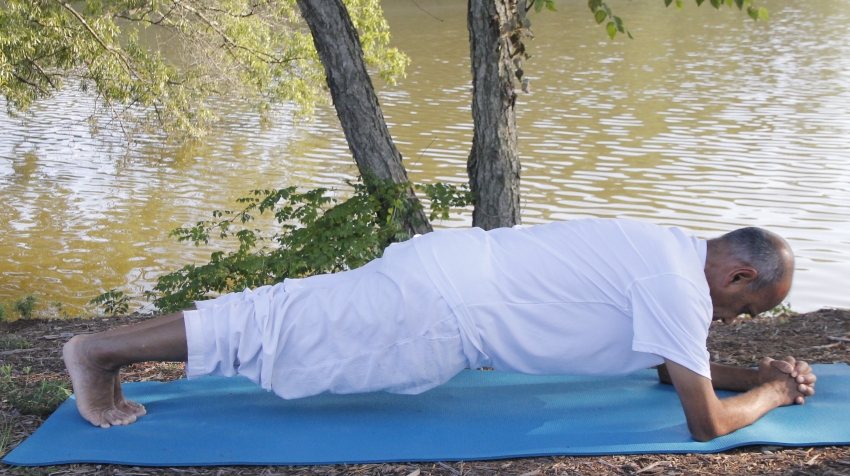 Dolphin Plank
One of the commonly practiced asanas for building strength in the arms and shoulders and also for a strong core is the Chaturanga Dandasana (four-limbed staff pose). This pose is commonly integrated as part of the Surya Namaskar sequence; however, it can also be done independently in association with its close cousin, the plank pose. Chaturanga Dandasana can be a challenging pose for those with weak wrists, arms or shoulders. A variation, called the Dolphin plank pose, is more readily accessible to most students. Even though it is relatively easier to practice it provides all the same benefits as the plank or the chaturanga dandasana, especially because one can hold the pose for a longer duration. This is a great option for those who have weakness in wrists due to sporting activities or repetitious mouse movements in front of the computer.
Continue reading »
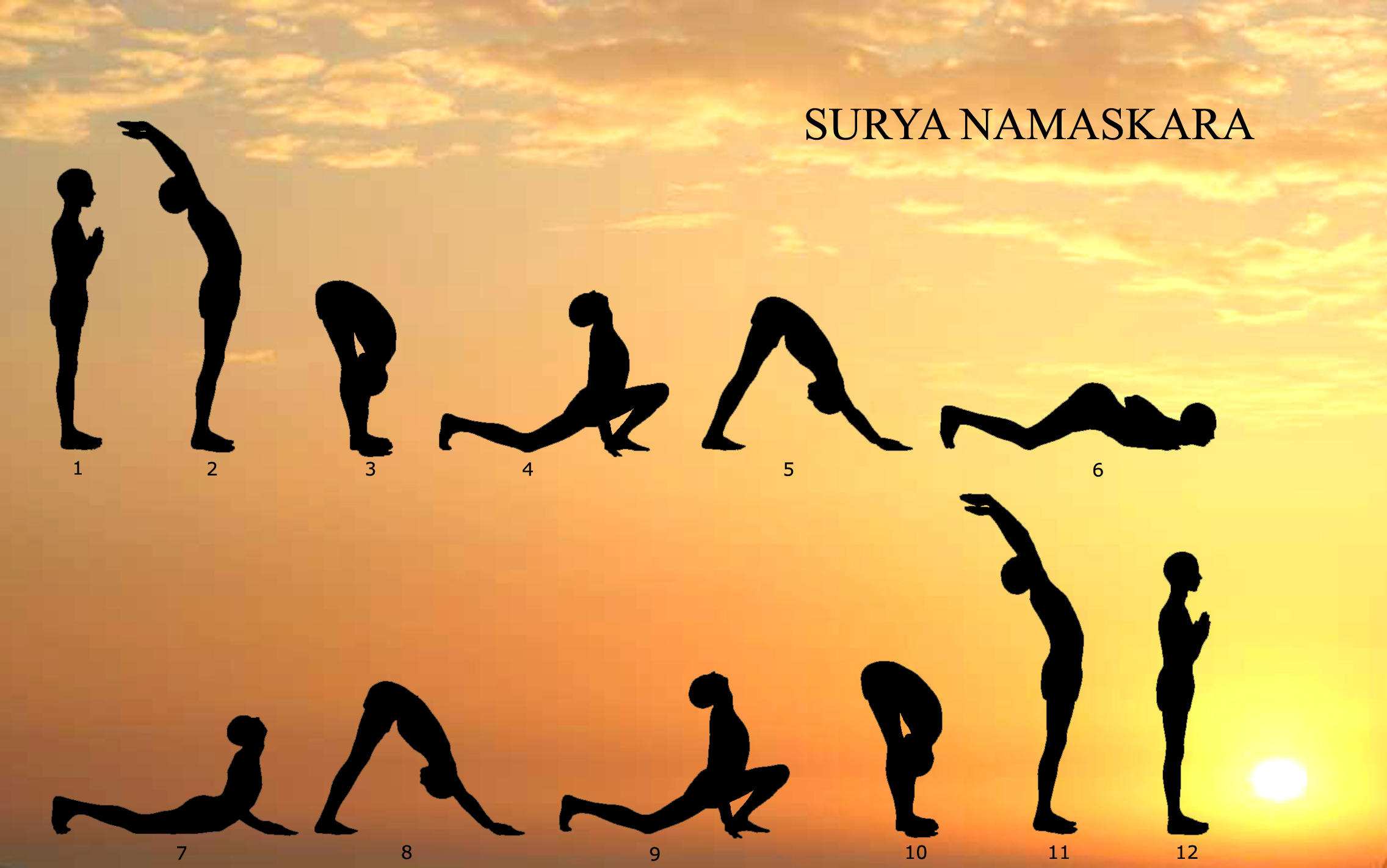 Surya Namaskar (Sun Salutation)
I invite you to join us for this memorable yoga event where we will practice 108 rounds of Surya Namaskar (Sun Salutations). Surya Namaskar, practiced to the accompaniment of beautifully chanted mantras,
will not only invigorate and energize you but also lead you into a state of deep meditation.
- Event: Surya Namaskar Yogathon (108 rounds of Sun Salutations)
- Location: Hindu Temple (HSNC) 309 Aviation Parkway, Morrisville, NC 27560; temple phone: (919) 481-2574
- When: Sunday, March 22, 2015
- Time: 7:00 AM to 11:30 AM (on-site registration starts at 6:30 AM)
- Program Fee (donation to the temple – including veggie lunch): $15 with pre-registration or $20 on the day of the event; In addition, please try to find sponsors who might be willing to pledge money per round that you complete.
Continue reading »
|
Video DVD
Yoga with Subhash (asana and pranayama)
- Basic asana sequence (~50 min) ($18)
- Pranayama/Meditation (~35 min) ($12)
- Set of above two ($25)
Video recording of special programs offered in the past
(Links to YouTube videos will be provided)
- 21-day yoga immersion - $40
- 7-day hip opening intensive - $20
- 14-day meditation intensive - $30
- 14-day pranayama intensive - $30
- 7-day hamstring/quad intensive - $20
- 14-day Level 2 yoga intensive - $35
Payment options:
- cash, check, Zelle (use subhashmittal@gmail.com) or Venmo (use 9199269717)
- PayPal (go to bottom of page) (add $5 to the fee listed above)
Please contact me if you would like to buy.
|








Recent Comments